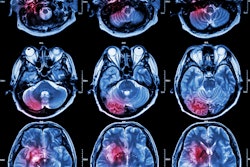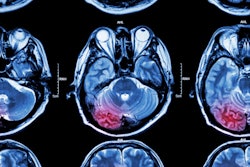CT perfusion and portable MRI are clinically viable and cost-effective alternatives to typical CT or CT angiography (CTA) imaging for evaluating dizziness in patients presenting to the emergency department (ED), according to research presented at the American Roentgen Ray Society (ARRS) annual meeting.
A team led by Kyle Tegtmeyer, MD, of Yale University in New Haven, CT, shared findings that suggest that if high-field MRI is not available for assessing dizziness in ED patients, then either CT perfusion or portable MRI "provides the highest utility," with incremental cost-effectiveness over CT/CTA of less than $6,000 per quality-adjusted life-years (QALYs).
Although ischemic stroke is fairly rare as a cause of dizziness in the ED setting, it can be difficult to discern whether dizziness is caused by nonischemic factors -- a problem that presents a "diagnostic dilemma" for ED clinicians, Tegtmeyer and colleagues noted.
"This dilemma is further hindered by the poor sensitivity of CT and CTA for posterior fossa strokes," they wrote.
Previous research has suggested that MRI offers high sensitivity for detecting posterior fossa strokes, although conventional MRI may not be readily available in all practice settings, the group explained. That's why other imaging strategies such as portable MRI and CT perfusion could help, especially since they may have higher sensitivity than CT/CTA.
Tegtmeyer's group explored the cost-effectiveness of portable MRI and CTP for stroke evaluation compared with standard-of-care imaging with CT and CTA, conducting a model study that consisted of a simulated cohort of patients who would not be candidates for acute thrombolysis or thrombectomy in the case of underlying stroke. The group estimated costs using the U.S. Centers for Medicare and Medicaid Services (CMS) physician fee schedule for imaging examinations and previously reported costs of preventive care, recurrent stroke, and stroke disability and measured outcomes by quality-adjusted life-years (QALYs).
The group found the following:
| Comparison of types of imaging to assess dizziness in patients presenting to the ED | ||
|---|---|---|
| Type of exam | Cost | QALYs* |
| Noncontrast CT head exam | $12,377 | 0.81 |
| CTA | $14,254 | 0.99 |
| Portable MRI | $15,389 | 1.19 |
| CT perfusion (in conjunction with CT/CTA) | $16,073 | 1.24 |
| *The higher the QALY value, the more benefit | ||
"[Our] model suggests a greater cost-effectiveness [in terms of QALYs] of portable MRI and CT perfusion compared to commonly used CT/CTA evaluation of dizziness in ED settings," Tegtmeyer and colleagues concluded. "Where access to conventional MRI is limited, these modalities may be the preferred option to maximize long-term outcomes and cost of care."




















